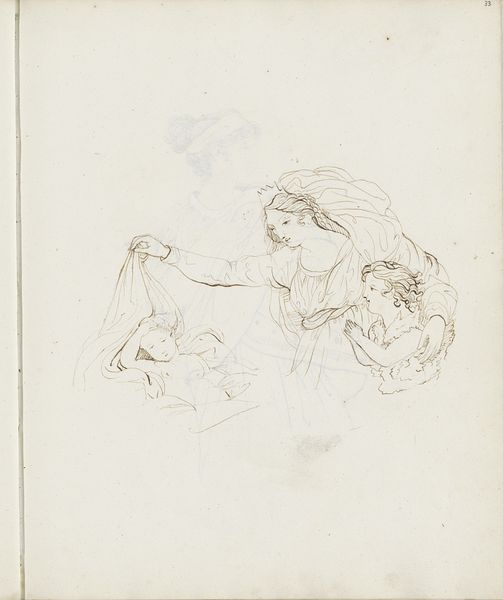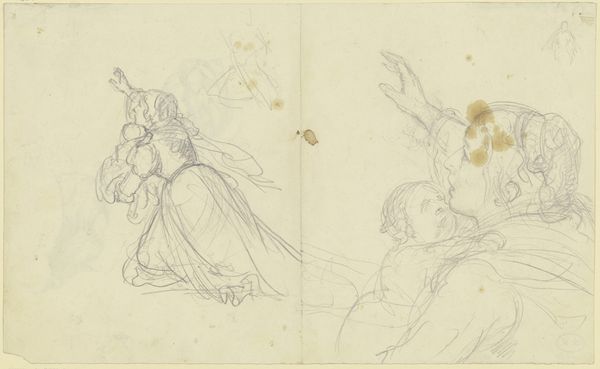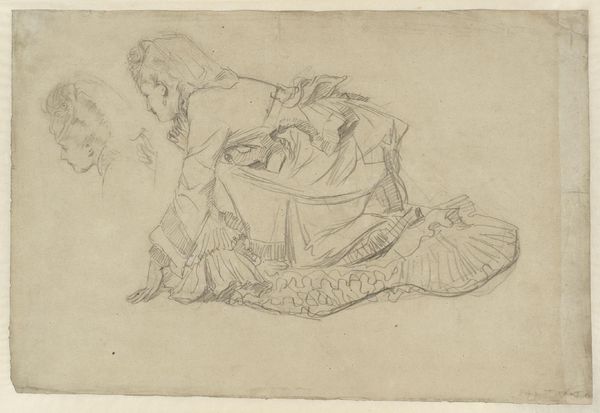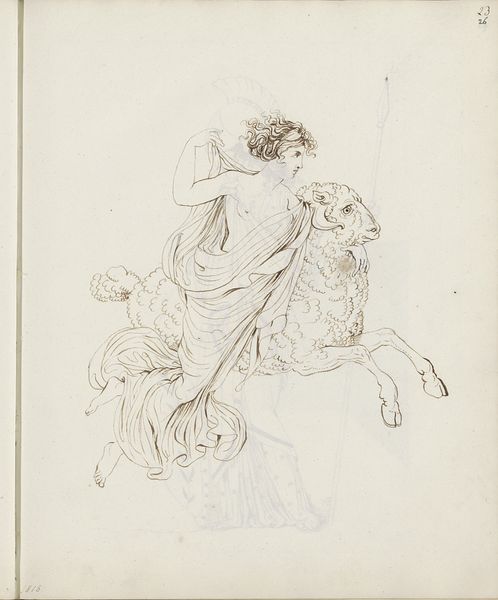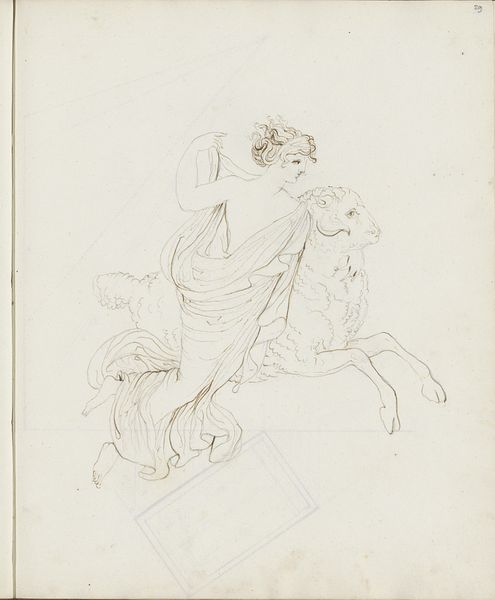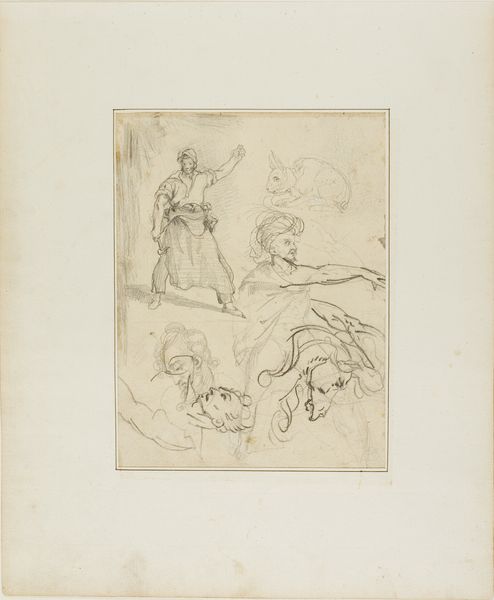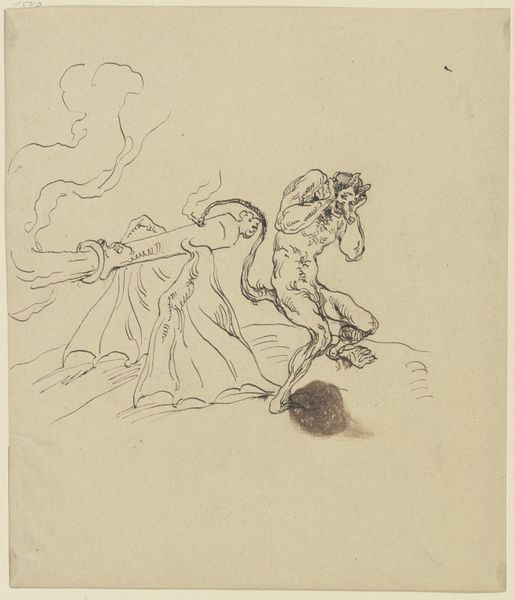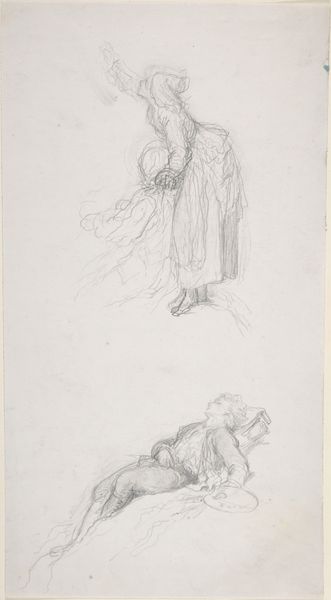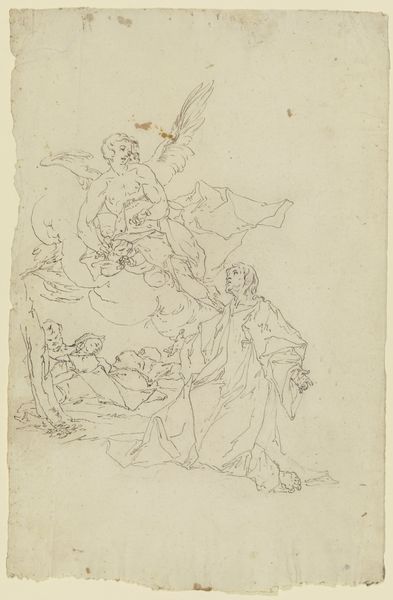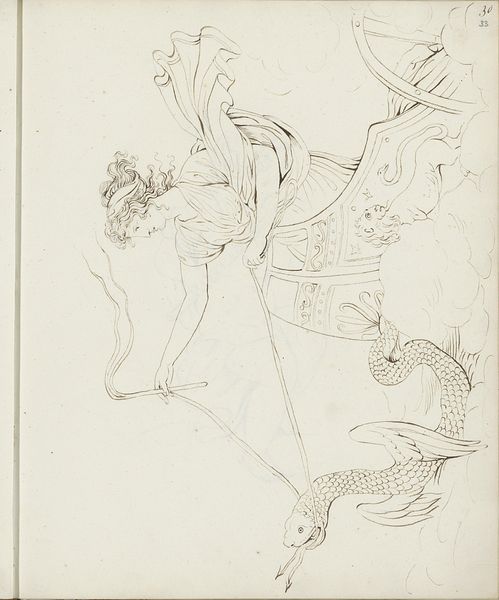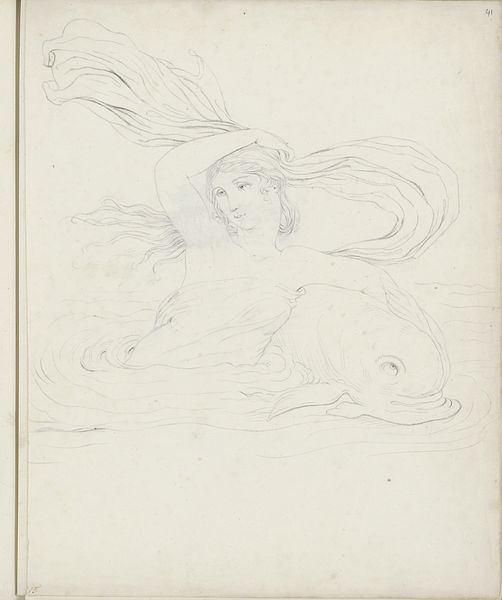
drawing, ink, pen
#
drawing
#
amateur sketch
#
light pencil work
#
pencil sketch
#
incomplete sketchy
#
classical-realism
#
figuration
#
personal sketchbook
#
ink
#
idea generation sketch
#
ink drawing experimentation
#
pen-ink sketch
#
sketchbook drawing
#
pen
#
history-painting
#
initial sketch
Copyright: Rijks Museum: Open Domain
Curator: This work, simply titled "Maria, Johannes de Doper en het Christuskind," dates back to 1821 and is an ink drawing. What is your first impression? Editor: There's an ethereal quality, isn't there? The light strokes and minimal shading give it a sense of floating, of being just beyond the grasp of reality. Curator: Precisely! The artist is grappling with idealized forms. Note the neo-classical aesthetic, reminiscent of Renaissance interpretations of religious subjects but with the added cultural context of nineteenth-century Dutch society. The artist was Jonkvrouw Elisabeth Kemper, an aristocratic woman, this type of domestic religious imagery spoke to ideals of piety and family values in that social stratum. Editor: The composition is intriguing. Mary extends a drapery over the infant Jesus, who is separate, almost hovering. And Saint John the Baptist nestles near Mary, seemingly gazing up at her. What are the implications of such a formation? Curator: From a structural standpoint, we can decode it like this: the extended arm and drapery form a bridge, yet the separation emphasizes the Christ child's unique status. The lack of firm grounding enhances his divinity and the subtle linear emphasis and shading brings form to light. Editor: Looking at it from a socio-political perspective, I find it curious that such devotional imagery found favor during the reign of Willem I, amidst efforts to consolidate the Kingdom of the Netherlands post-Napoleonic era, I am left to wonder about the patrons. Curator: The drawing reflects a revival of religious sentiment following the Enlightenment. It perhaps subtly legitimizes the ruling family’s divinely ordained authority through its representation of Mary, John, and Jesus. Editor: A fascinating intersection of personal faith and public image! This modest ink drawing speaks volumes when viewed through its intricate structures, delicate linearity, and within the social and historical atmosphere of its making. Curator: Absolutely! And how it allows us to reflect on both the universal themes and its very particular context, is what makes art perpetually rewarding.
Comments
No comments
Be the first to comment and join the conversation on the ultimate creative platform.
